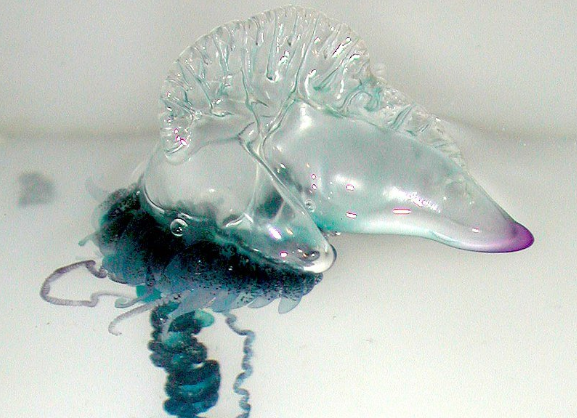
Anyone who is unfamiliar with the biology of the venomous Portuguese man-of-war might mistake it for a jellyfish. It’s not a jellyfish, and it’s not even a “it,” but a “they.” The Portuguese man-of-war is a siphonophore, which is an animal composed of a colony of organisms that work together.
Tentacles, Colony Structure, and Venom
The man-of-war is made up of four distinct polyps. It gets its name from the topmost polyp, a gas-filled bladder, or pneumatophore, that sits above the water and looks like an old warship in full sail. Because of the purple-blue color of their pneumatophores, man-of-wars are also known as bluebottles.
The tentacles are the second organism of the man-of-war. These long, thin tendrils can extend 165 feet below the surface, though 30 feet is more common. They are covered in venomous nematocysts that paralyze and kill fish and other small animals. A man-of-war sting is excruciatingly painful for humans, but it is rarely fatal. But beware: even dead man-of-wars washed up on the beach can sting.
Tentacle muscles attract prey to a polyp containing gastrozooids or digestive organisms. The reproductive organisms are housed in a fourth polyp.
Movement
Man-of-wars can be found floating in warm waters around the world, sometimes in groups of 1,000 or more. They lack independent propulsion and must rely on currents or catch wind with their pneumatophores. They can deflate their air bags and briefly submerge to avoid threats on the surface.

Leave a Reply